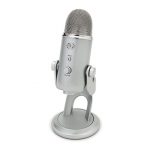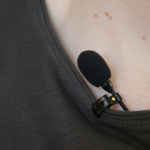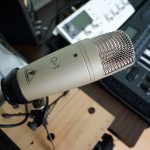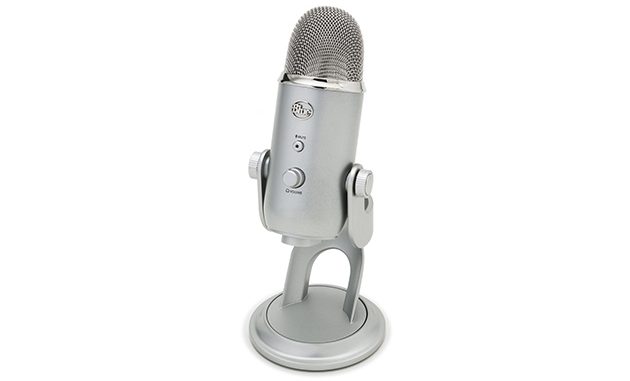
There was a time when to record anything to a high standard you needed a lot of equipment, or even the time and money to go into a recording studio. In the modern day and age, the top USB microphones provide audio recordings of extremely high quality. USB technology has made so many different types of technology easier than ever before, and mics are no exception.
The Microphone technology used to need to be put through a mixing desk or other recording studio device to boost the signal to be loud enough to be recorded. These would also need to provide power for certain mics called condenser microphones to work. Nowadays, all of this has been built into the USB technology. You can still record in the traditional way, but it isn’t the most convenient, and USB mics are often as simple as ‘plug and play’.
What Are USB Microphones Used For?
There a lot of uses, and the growth of technology continues to create more and more. We’ve listed below some of the most common uses.
- VOIP/Skype – talking to people over the internet is increasingly popular, and thanks to USB mics it is increasingly easy. The clarity you can get from some of the best microphones on the market is far superior to that of a headset or the audio on your computer, making this a great choice for video conferences or just talking to friends, family, and associates.
- Recording Vocals – there are plenty of people out there with good voices, in the reviews below we’ve covered USB microphones for rappers and singers, who may well want to record a vocal take (either practice or the real deal) from the comfort of their own home. There are loads of backing tracks and karaoke versions of songs you can use to start recording vocals, or you can write your own songs.
- Recording instruments. This is something not everyone immediately associates with home microphones. These types of microphone are great for recording instruments as well as voices, and especially perfect for those who want to record guitar or piano. The models of mic which best suit recording instruments are among those listed below.
- Podcasts and voiceovers. Most of the products on this list are designed to record voices excellently, and the spoken word is no exception of course. We have full lists here on the site of the best microphones for podcasts, and the best for voiceovers, should you wish to explore in more detail.
Benefits of USB Microphones
So why do we opt for these over the ‘old school’ setup? What are the advantages of using a USB model of recording device?
- Ease of setup. This is the big reason for me, if I want to record something at home, or even in the office or studio, I don’t want to take forever to set it up. If you’re using a dynamic or condenser analog mic and need to run it through another set of devices such as pre amp and mixer, it adds a lot of hassle to the process.
- Price. For the same reasons. The price of the microphones themselves aren’t that different, but if you have to buy a lot of leads and accessories to get it up and running then it can quickly add up. Even some of the cheapest USB mics are good for certain uses and can record relatively clear audio.
- Portability. If you have all these extras to take with you then you can’t just go and record anywhere with ease, but a USB microphone can be taken in a laptop bag or backpack and whipped out and ready to go in seconds. Amazing if you need to record something on location.
It is important to be 100% honest. A microphone that has cost $5,000 being put through a mixing desk that has cost another $2,000 is likely to be better than a USB model. The technology has come a long way, but has not overtaken the industry standard mics used in the world’s top recording studios. That doesn’t mean they don’t do a good job though, and microphones made by manufacturers such as Blue Mics have started to more regularly find their recordings being used in commercially released songs, there are albums recorded exclusively USB that sound great, and if you don’t have access to a studio then these are for you.
The Best Mics Reviewed
Time for the reviews. We’ve put together some of our favorite products in this space, all of which provide a lot of clarity and are simple to use. They each have their own unique set of features and abilities and some will be better for some uses than others. They each have their unique strengths which we have tried to outline.
Blue Microphones Yeti USB Microphone
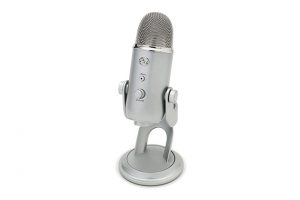 Blue Microphones are real trailblazers in the world of USB. They have a huge range of mics and accessories but arguably the best product from their brand is the Yeti. This is without a doubt one of the top-selling mics on the market, and with good reason.
Blue Microphones are real trailblazers in the world of USB. They have a huge range of mics and accessories but arguably the best product from their brand is the Yeti. This is without a doubt one of the top-selling mics on the market, and with good reason.
It offers four different recording patterns, cardioid, bidirectional, omnidirectional & stereo, this means that there are options. If you’re recording a conversation between a lot of people you can put the mic in the middle and set it to omnidirectional if you’re recording a guitar you can set it to a cardioid pickup pattern. This may seem hard to get your head around if you’re a beginner, but it isn’t difficult and a quick look at the manual and play with the settings will show you the benefits.
As well as this, the Yeti comes with gain control, something that isn’t found on all USB mics but is really helpful. It controls how much the sound is boosted as it comes into the mic, for something quieter the gain can be boosted to ensure you get a clear recording, if you have a loud source sound you can turn the gain down.
It really is plug and play. The software we have tested it with (major recording software for both PC and Mac) has picked it up as soon as the Yeti is plugged in and turned on, just set it to the input device and you’re good to go. It couldn’t really be simpler.
The frequency response is great meaning no sounds get ‘left behind’ and it records in 16bit 48kHZ sample rate, more than good enough for most of our audio projects. The Yeti comes with its own unique and flexible stand which makes use even easier. The product comes with our top recommendation.
A quick glance at the Yeti reviews will show you a lot of what this product has been used for, and we’ve seen reports of people getting excellent recordings of both instruments and voices. This definitely stakes its claim for being the best model of USB microphone out there today, and while it is far from the cheapest, it does represent good value for money with a huge array of features and intelligent design.
Samson Go Mic Portable USB Condenser Microphone
We wanted to test one of the cheaper USB mics we found too and at the time of writing this product fit well within the budget. The Samson Go Mic is built for portability, and it is really pretty small. Don’t let that fool you into thinking this lacks quality though, as this isn’t a shoddy mic.
In all honesty, this is probably best used for podcasting and voice conferencing etc. rather than recording a seminal album, but if your planned use is musical then it will help you to lay down a decent demo recording. The audio clarity isn’t as good as the Yeti, but with such a good value price tag it is hardly surprising.
I’m certainly not slating the microphone. The company, Samson, have a lot of history producing microphones and know what they’re doing. This dive into the USB market has been really successful with a lot of items shifted. There is plenty to like about the design:
- Tiny and easily portable, great for fitting into your laptop bag and taking out and about with you.
- Clever 1/8″ output headphone jack so you can monitor your recordings in reel time with absolutely no latency.
- Two different pickup patterns to choose between and ensure you get the best for your audio recording.
- Clever built-in stand design which means the mic can free-stand on a desk or flat surface or can even clip onto a laptop.
As we’ve alluded to, this mic might not be set to record the next hit album, but it is great for a lot of different uses such as recording podcasts, voiceovers and commentaries for gaming videos and much more. If you can afford one of the other models, I would advise that you to look for the improvement in audio clarity and the more ‘professional’ sound, but if you can’t afford to then the Samson Go mic is a good option and doesn’t fall too far behind the competitors.
Rode NT-USB Microphone Review
So here it is. The Rode NT-USB is the closest to studio quality you’re going to get, and honestly, in a blind test I’m not sure people would be able to tell the difference. The clarity of the NT-USB is unbelievably good and it is advertised as being a studio mic.
If you want to record music, be it vocals, guitar or other instruments, this is probably the best option there is with an unbelievable level of quality. Rode have a rich history of producing microphones so it is little surprise that their USB offering is a real Rolls Royce of a recording device. So what features set the NT-USB apart?
- Comes with a load of accessories including ring mount, pop shield and stand, making it easy to start out and another ‘plug and play’ model.
- Can be used with the iPad. This is great for loads of reasons, band practices and field recordings for instance, plug it into your iPad and make some demo recordings.
- Will fit most industry standard microphone stands so nothing specific needed to put it into a studio setup.
- Gain control on the mic to control the input.
Honestly, it is hard to see why anyone wanting a single microphone setup or a portable microphone would look at anything besides the Rode NT-USB. The first time I heard the recordings from this mic I realised how far the USB technology had come, and it is little surprise that they are advertising this as a studio mic.
Among the other reviews I’ve read, I’ve seen everyone from casual users to studio engineers singing the praises of the Rode mic, an I am happy to add my voice to its praise. This is easy to setup, easy to use, amazing quality and even has a two year warranty when you register with the manufacturer. It isn’t the cheapest, but for shear quality this has to be considered one of the best.
Blue Microphones Icicle XLR to USB Mic Converter/Mic Preamp
Okay, so this isn’t a microphone in itself. This is a converter and preamp product made by our old friends at Blue Mics (as mentioned above). Consider this a bonus review. The Icicle takes the standard output of old-school microphones such as SM58, SM57, Neumann and other mics and converts the signal ready to plug into USB. If you already have a mic that you want to use but it isn’t USB, this could be your solution. The preamp is basically an extension of the cable you’re using and it makes it an XLR to USB connection, great for those already owning a good quality microphone.
Conclusion
Which mic you decide is the one for you depends on so many different factors including budget, what you plan to use it on, any brand preferences you have and the spec of your computer. The above models are all good quality, and are at three very different price ranges. We’ve provided an option if you just want to mess around or do some simple recordings (the Samson Go). We’ve also looked at the range of Blue Mics, and if the Yeti isn’t the one for you, don’t forget they offer a whole range of USB microphones. If you want a simple answer to which is the best mic we’ve used, it is definitely the Rode, which has the capacity to make studio quality recordings on the go or in the comfort of your own home.
Whichever microphone you opt for, don’t forget that the environment you record in is just as important, and you need a room which is suitably quiet and has good acoustics.
So there we have it. Do you have any experiences with the microphones we’ve mentioned, or want to add your thoughts on a different product you’ve used? Feel free to leave a comment.


